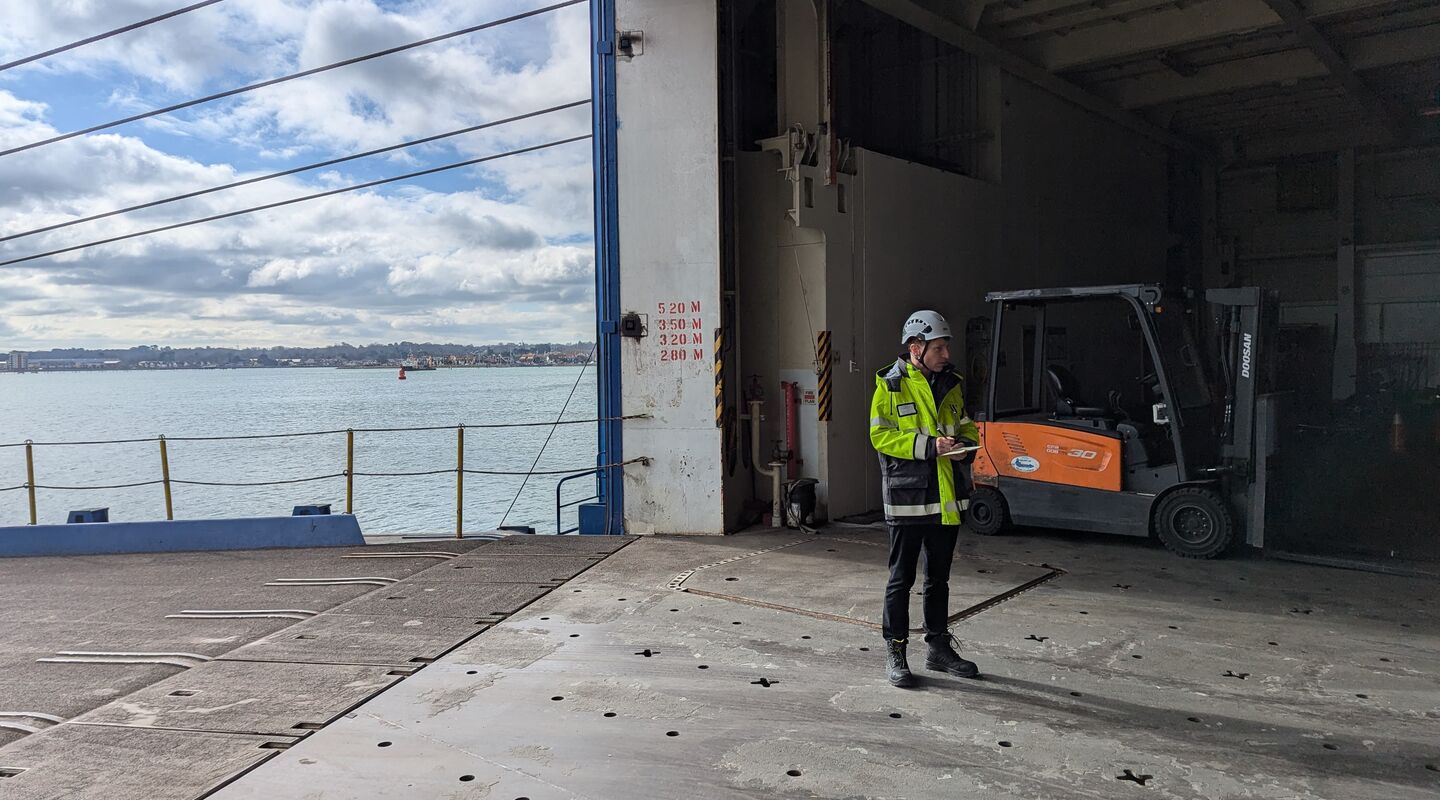Meet our experts: Graham Wilson
This month’s "Meet our experts" column features Graham Wilson, Head of Marine Investigations & Safety Learning. Graham has spent his career focused on maritime safety, from investigating accidents to managing risks. He’s committed to learning from incidents and taking steps to prevent them. By encouraging continuous improvement, Graham is helping create a safer, more efficient fleet, which means better safety and reliability for both our team and customers. Stay tuned for the full story!

Say Hi,
Hi, I’m Graham. My journey into the maritime world began while growing up by the sea. I remember being fascinated by the different ships powering through the waves, with their crews working tirelessly to keep everything running smoothly. That early fascination led me to study naval architecture, and then onto my first role as a naval architect, where I focused on ship safety— performing stability and structural calculations, and ensuring vessels were safe to operate.
In 2002, my life changed when I got the opportunity to join the UK’s Marine Accident Investigation Branch (MAIB) as a flag state investigator. I spent over 13 years investigating a wide variety of maritime accidents, while receiving extensive training in accident investigation. What makes these investigations so important is that they aren’t about assigning blame, they are about learning from incidents and making changes to prevent them. This approach has shaped my entire perspective on safety.
Helping improve safety at Wallenius Wilhelmsen
Over the years, I’ve worked in marine insurance, trained investigators, and led maritime risk and investigations for a major cruise line. Each role taught me how important it is to learn from incidents and take action to prevent them.
When I got the chance to join Wallenius Wilhelmsen last year, I didn’t hesitate. The company’s focus on safety and sustainability matched my own values. As Head of Marine Investigations & Safety Learning, I lead investigations, work with ship management teams, and develop training programs to improve safety skills across the company. My goal is to make sure we learn from incidents, making our ships and operations safer.
Learning from incidents and taking action
Investigations are never easy, and some involve tragic losses. The hardest part of my jobs has been talking to families who have lost loved ones. I’ve been trained to handle these situations with care and empathy. Even though these moments are difficult, they’re also opportunities to improve safety and prevent future accidents.
One of our most important safety initiatives, "See It, Say It, Stop It," came directly from an investigation. This campaign encourages our crews to speak up when they see something unsafe. Safety starts with awareness, and by taking action, our crew members help prevent accidents before they happen.
Technology is also improving the way we investigate incidents. Tools like voyage data recorders and CCTV footage allows us to analyze incidents with more details than ever before. But we still rely on the crew to openly report issues and share information so we can learn and improve from a safety-first perspective.
Why this matters for our company and customers
At Wallenius Wilhelmsen, safety is more than just following rules—it’s a key part of our strategy. A safer fleet means fewer delays, more reliable operations, and better service for our customers. Most importantly, it’s about ensuring our colleagues are unharmed. By focusing on safety, we reduce risks, protect our people, and ensure smooth logistics for businesses worldwide.
Safety also plays a role in sustainability. When ships operate efficiently and without disruptions, we use less fuel and lower emissions. This helps us and our customers move toward greener, more responsible shipping solutions.
Working together for a safer future
Safety is a team effort. Accidents don’t happen because of one mistake—they usually result from a series of factors. That’s why we focus on improving systems rather than blaming individuals. By learning from every situation, we can prevent similar incidents and create lasting improvements. I’m proud to be part of a company that values learning and continuous improvement.
Together, we’re not just making our operations safer—we’re building a better future for maritime logistics.


